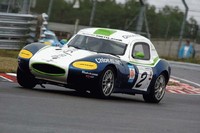HISTORY & EVOLUTION OF THE G33
Ginetta was founded in 1958 by the four Walklett brothers, Douglas, Trevor, Bob and Ivor, all motor racing enthusiasts. Their first car was a special, based on a pre-war Wolseley Hornet and their second car, a similar project the G2 saw approx' 100 produced. By 1961 the stylish G4 was built to double for racing and road use which increased Ginetta's reputation in this field. Company expansion led to new premises at Witham near Chelmesford where they were to continue for many years, G4 production lasted eight years with more than 500 manufactured. During this period Ginetta also produced the G8, a single seater F3 and the G10 powered by a 4.7 litre Ford V8. By 1966 the G4 was succeeded by the G12 which was Britain's first mid engined GT and beat all the competition of the day on the tracks.
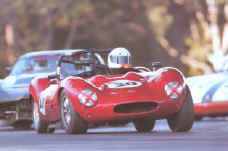
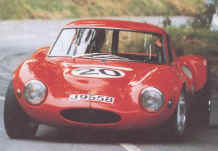
The very successful racing G4 and G12, forerunners to today's models
In 1967 the most successful model to be made was launched and the G15 saw the light of day at the Earls Court show. With Hillman Imp power train, production soon rose to a peak of 6 cars per week, leading Ginetta to transfer to a large factory at Sudbury, Suffolk. More than 800 were made before manufacture ceased in 1974. The previous year the G21 began production as a sister car to the G15. This featured attractive fast back styling along with a 1725cc engine and high levels of equipment. Like the G15 it was crash tested for full type approval and around 150 were made up to the end of 1978, By the early 1980's G23 & G24 prototypes were made but never reached full production with revamped G4's providing Ginetta's income instead. Incorporating Ford mechanicals, the G25, the first prototype mid engined road car marked the beginning of a new line of models in 1983 and lead on to the G26 four seater in 1984. The styling of these evolved into the G28, G30 and G31 component cars. By now, the Walkletts were looking to return Ginetta to a bigger league with another fully type approved vehicle, the G32, which was developed from G25, was to be a mid engined 2 seater model powered by a 1.6 litre fuel injected 4 cylinder engine, producing 110 BHP. This was type approved by early 1989. At the same time plans were drawn up to relocate to Scunthorpe where a larger factory could accommodate the full potential of the new car. During late 1989 the company was bought by a management buy in, led by Sheffield businessmen, Martin Phaff and Mike Modiri. With the youngest of the Walklett brothers, Ivor, remaining as Technical Director. Ginetta is set to develop the full potential of the G32 and the sports car market with the launch of two complete new models the G32 Convertible and the G33 Convertible at the British International Motor Show in September 1990.
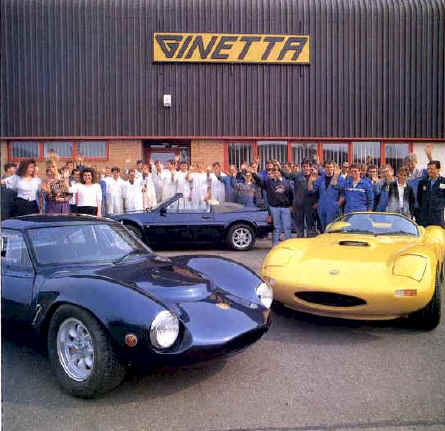
Ginetta cars with Martin Phaff at the helm around 1990
Over the last 15 years, the G33 has gained a bit reputation as the "bad boy" of the range, and not for the faint hearted. Those that have raced them had to overcome the initial feeling of the car being unpredictable on the limit, but with enough hair on your chest and some chassis tweaking it could indeed be tamed. Fast road use also required respect, but once driven its not easily forgotten and is still one of the best loved Ginetta's ever. It might never had been if not for a doodle on a tablecloth...
Its now 1990 and Ginetta was under the recent new management of Martin Phaff. When the idea of the G33 was first jotted out on a table cloth in a Pizza restaurant between Mark Warklett and Noel Palmer (who had worked for TVR). It seeming like a good idea and the table cloth was taken away at the end of the evening with the new blueprint. Although the main car taking up Ginetta's time and resources was the mid engine'd G32, the G33 was more of a super car experiment. The idea was to squeeze a Rover 3.9 ltr V8 into the pretty G27 that had been in production for some time in place of the 4 cylinder Ford Pinto engine normally fitted to produce a very rapid car indeed. A prototype car appeared at the 1990 Motor show and subsequently road tested by Tiff Needell for the BBC Top gear program. This saw the enquiries flood in to an unsuspecting Ginetta who really wanted to promote the G32.
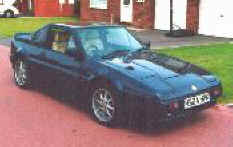
The G32 was designed to be a low cost mid engined MR2 rival with full type approval and Fiesta XR2 running gear. The G33 however was a whole different ball game...
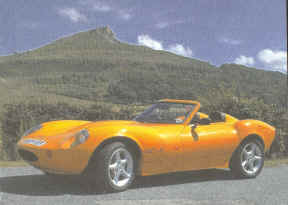
The G27 body was the basis for the G33. It was stretched and widened to take the Rover V8
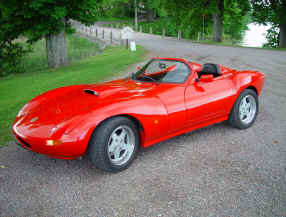
Further mod's to the G27 shape included cut off windscreen corners (from an earlier G16 racer) to aid access to the cabin, and a power bulge to clear the Rover V8 air intake
TECHNICAL SPECIFICATIONS
The Ginetta G33 Convertible marks a return of the company to the production of high performance, lightweight sports cars, suitable for both road and track use. With a trace of previous models in the overall rounded, aggressive styling, the G33 is all new and will join the ranks of other mass produced modern sports cars with ease. The two seat, two door convertible body is manufactured in glass reinforced polyester resin. This is combined with a separate galvanised chassis. Suspension is independent all round with double wishbones and front and rear anti roll bars. Gas filled, adjustable shock absorbers with adjustable collar coil springs are fitted all round. A Salisbury differential with fixed length drive shafts and alloy hub carriers complete the rear suspension. Braking is by discs all round, inboard at the rear and ventilated outboard at the front. Calipers are twin pot at the front and single pot at the rear. Fondmetal, aluminium alloy road wheels are fitted with the latest Goodyear Vector 195/50 ZR15 low profile tyres all round. Interior trim is leather seats, deep pile carpet and traditional instrumentation laid out directly in front of the driver. This comprises of speedometer, tachometer, oil pressure, water temperature and fuel gauges.
ENGINE
This is front mounted driving the rear wheels. Vee slanted 8 cylinder with a total capacity of 3947cc. Maximum power is 200 bhp at 5280 and maximum torque is 220 ft/Ibs at 3500 rpm. Induction is by fully electronic fuel injection with a single electric fuel pump surplied bv the 12 gallon tank, mounted at the rear of the vehicle.
TRANSMISSION
A five speed manual transmission with hydraulic operated single dry plate diaphragm clutch is standard.
Gear ratios:
2nd. 2.09
3rd. 1.40
4th. 1.00
5th. 0.792
Reverse 3.43.
The final drive is a hypold bevel type with a ratio of 3.54: 1.
Performance 0 -60 MPH in 5.0 seconds. Maximum speed 150 MPH.
CHASSIS & SUSPENSION
An all steel, multi tubular backbone chassis, galvanised for corrosion protection. Front suspension is by upper and lower wishbones, coil springs and adjustable gas filled shock absorbers with anti roll bar. The rear suspension is by upper wishbone, triangulated lower wishbone, coil springs, gas shock absorbers and anti roll bar. This all runs on 15" diameter aluminium alloy road wheels with Goodyear Victor 195/50 ZR15 tyres. The braking system is non servo assisted on discs all round. These operate through separate master cylinders. The parking brake operates on a separate calliper on the rear discs which are inboard with a 10.911 diameter. Front discs are outboard and ventilated with 11. 2 diameter. Steering This is rack and pinion with no power assistance. A leather trimmed Steering wheel is fitted as standard giving a turning circle of 32'
It also featured on the cover of Autocar, Performance car and Which kit. Consequently the car was somewhat rushed into production really without the luxury of a full development program to for fill the new demand. As there was not enough room to fit the V8 straight into the G27 so the body and chassis was widened by 3 inches and the engine bay increased by 4 inches. The rear suspension was converted to fully independent twin wishbone, and the Ford parts bin fully raided for many of the parts needed. These included Ford Sierra Cosworth differential and brakes to cope with all the extra power, with Fiesta and Escort switch gear, rack, and steering column. A chunky 5-speed gearbox came from the Rover SD1 driving the rear wheels through a short prop shaft. Ginetta produced all the chassis, bodywork, wiring, and used aftermarket instrumentation for the dashboard. The first original prototype did not include a roof of any sort, but by the time production was under way, a pivoted frame assembly had been included under a the head fairing covers that supported a complete canvass top. That’s about as far as the concessions to comfort went, although the interior sported leather seats (to order), carpet and a heater. The doors where so small and curved that only clip in windows could be used. The suspension was fully rose jointed and adjustable, together with the dampers and springs, leaving no doubt to Ginetta’s past racing pedigree. The factory quoted around 205bhp from the stock 3.9 litre unit, with improved exhaust and air intake to raise the power over the 180bhp Range Rover power output. This power output in an 850kg body gave true super car performance, but without having to resort to turbo charging a smaller engine. 0 – 60 times where quoted at 5 seconds and a top speed of 150 mph. The G32 however had taken considerable resource from Ginetta and was fully type approved, leaving no cash to type approve the new G33. To overcome this the G33 was still sold officially as a kit car and only required an M.O.T to make road legal (pre the days of the dreaded S.V.A. test). Although the car actually came from a dealer fully built, a small instruction manual was included to show the assembly of the front suspension "for the end user". After that a trip to the local taxation office, with proof that all parts where brand new allowed the fitment of a brand new registration. (Anyone who cares to check the cars carefully might however find the odd second hand bit like the Mini heater boxes!). Most cars are either H or J plate, with catalysts exhaust systems becoming mandatory post August 1992 K plates.
Road tests at the time basically gave the thumbs up to this road racer but, with a few reservations on its final fit and finish (not surprisingly considering the rushed production). Other cars of similar layout and performance at the time was the then new TVR Griffith (£500 more expensive, but a lot more luxurious), The Morgan V8, The MGB V8, and the Westfield Seight. Each car had its merits and weakness, and the G33 fitted in as an agile performance car that could be used for longer distances than some of the “track only cars”. Unfortunately for Ginetta the new TVR’ Griffith and new Chimera where causing even more of a stir giving both good performance and high levels of comfort although TVR’s prices where rising rapidly (nothing new there then). The G33 however was still selling well through a new series of dealers throughout the UK and abroad thanks to its pretty body, fantastic exhaust note and performance. A number of cars where exported to the Japanese’s who just love traditional British sports cars. The cars left the factory in new ready built form at around £14000, but by the time the VAT, registration costs, dealer mark-up had taken there toll, it retailed at around £21000 (the same cost as the brand new Vauxhall Calibra turbo that had just been launched). There was a three-month waiting list as each car was made to customer order for paint and interior colours. As they say racing improves the breed and a series of G33’s where raced in Sweden and this did show a few chassis weaknesses, and at around car chassis number 30 extra bracing was added to the front to beef the chassis up, but beyond that the basic design changed little. Officially around 100 cars left the production line (to allow the cars to be raced a minimum number had to be made), but its more likely to be around 90 in real terms. A few cars where modified by Macdonald Racing but adding a 300 plus BHP Rover V8 and chassis bracing to produce the Vittess model. Not for the feint hearted!! It appears that during the production run the cars where constantly modified to make improvements. These included:
- Significant rear body moulding changes
- Extra chassis bracing around radiator and front turrets
- Spring rates changes
- Hood and frame changes
- Bonded seat headrests with more hood frame modifications
- External fuel filler added
- Longer Wishbones to reduce wheel offsets
- Front indicator changes
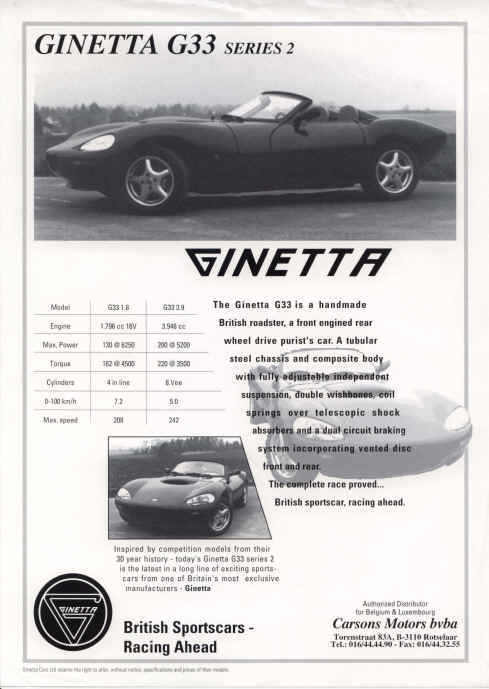
This brochure shows the restyled bonnet, windscreen and lights on the G33 mk2 that could have Cosworth 2 ltr or Rover V8 fitment.
Just as things where looking good Ginetta ran into cash flow problems with rising interest rates and fluctuations in the money market, and production of complete G33’s ended in 1993. The company was rescued by a consortium of dealers who cleared the debts, but there was insufficient cash to buy the complete Rover Engines and ‘boxes at £5000 each to enable Ginetta to sell complete cars. Ginetta where initially somewhat unwilling to sell the G33 in kit form, as this would have devalued the factory built cars so carried on with kit production of the G27 while new models where designed. Now further development of the G33 did take place with various forms of engine including the 2 litre Ford Cosworth (this in chipped form was a real animal that scared motoring journalists, but was unfortunately this car stolen from the factory), and a G33 mk2 with Mazda headlights.
The moulds and production rights of the G33 where then sold to a project with Volvo and a new company called Gin 1 in Sweden (Pronounced Gin Etta in Swedish). This helped raise some much needed cash for Ginetta in the UK, and saw the new car with the 2 litre 4 cylinder 165 bhp turbo unit fitted, and was subsequently renamed the G34 Sixteen of these cars where built in Sweden before production ceased as the project folded, and production rights returning to Ginetta in the UK.
The last development back in the UK was the G40 to commemorate 40 years of Ginetta. Styling changes included air ducts on the rear wing and a smoothed in power bulge. This car was available from Ginetta cars in kit form. The Volvo unit had been dropped, and power was now either Rover V8 or Ford Zetec.
Although the G40 was a well sorted car, Ginetta's managing director Martin Phaff turned all his efforts in promoting a one make series of junior racing cars in the form of the G20 that is currently still running.
Ginetta cars have continued with the development of new and very successful race cars under the leadership of the new owner Lawrence Tomlinson including the G50 and soon to be revealed a new G40.
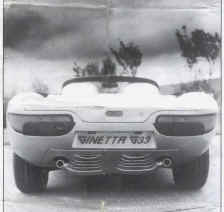
A one off factory restyled rear end
on the G33 SC
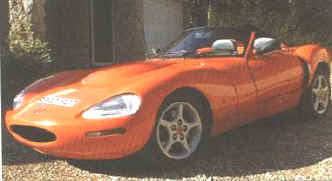
The last G40 body shape, with either Ford Zetec or Rover V8 power. This particular 1998 example is the only right hand drive car fitted with an 165 bhp Volvo engine.
